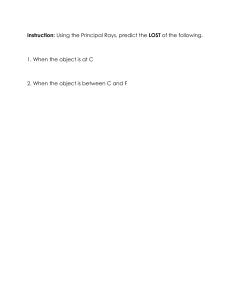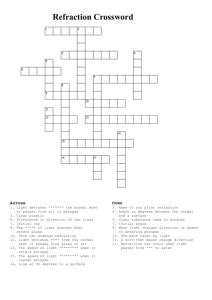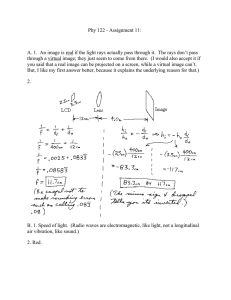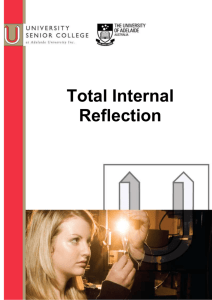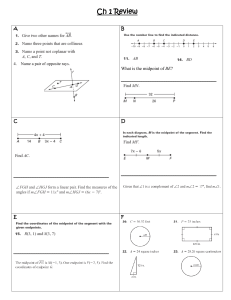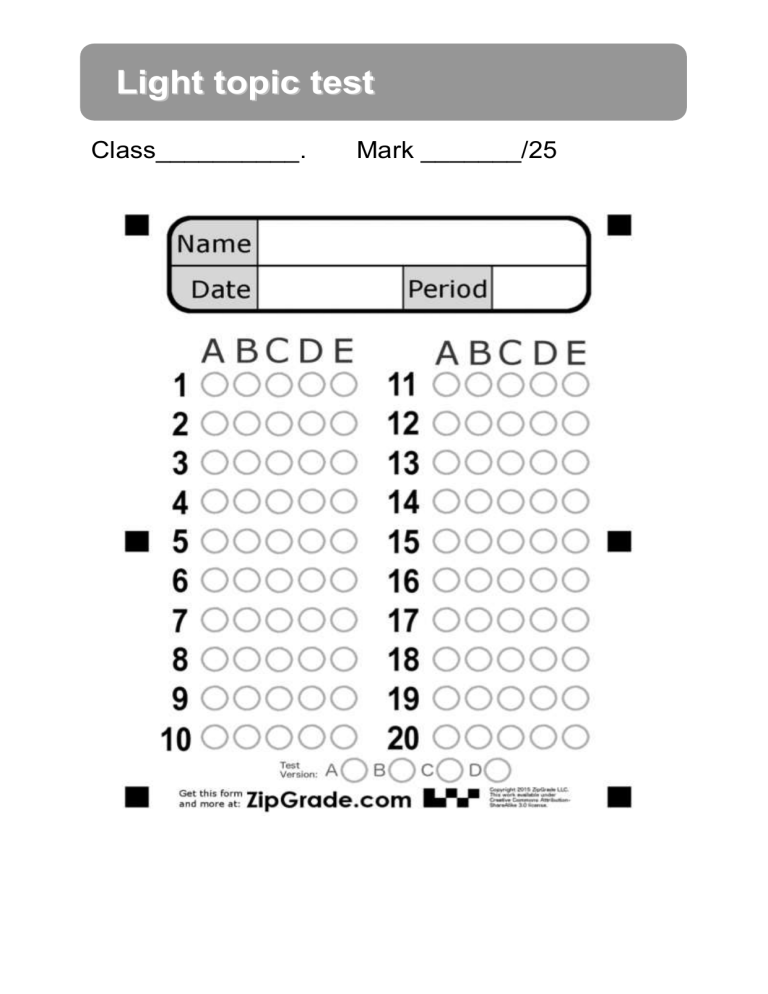
Light topic test Class__________. Mark _______/25 1 Mary is standing in water in a shallow pool. She notices that her legs look bent. What causes light rays to be bent from their path? A reflection B absorption C scattering D refraction 2 Which one of the following is NOT a primary color of light? A green B yellow C red D blue 3 Which one of the following is described as an incandescent light source? A glow-worm B light globe C candle D Moon 4 A television screen is showing a picture of a cyan-colored tropical pool. Which colored dots are being activated to produce this cyan color? A red and blue B red and green C blue and green D blue and red 5 Julie is looking at a red apple. Why does it register as red in her eyes? A The apple reflects red light and absorbs all the other colours. B The apple absorbs red light and reflects all the other colours. C The apple reflects all colours but only the red cones in her eye are activated. D The apple absorbs red light, and lets all other colours through. 6 Which statement about eyes is correct? A The blind spot is the spot on the retina that is directly behind the pupil. B Anything you see forms a small, upright image on the retina. C The rods are present to improve the sharpness of the image you see. D The lens can change shape, depending on what you are looking at. Questions 7 to 10 refer to the following diagram. This shows four Perspex prisms of different shapes. 7 Which of the shapes is classified as a biconcave lens? A Shape I B Shape II C Shape III D Shape IV 8 If parallel light rays enter it, which of the shapes will produce converging rays? A Shape I B Shape II C Shape III D Shape IV 9 In which shape will light change its speed as it enters the Perspex? A Shape I B Shapes II and II C Shapes III and IV D All of them 10 From which shape will a refracted ray emerge parallel to the incident ray? A Shape I B Shape II C Shape III D Shape IV 11 Which of the following statements about light is FALSE? A The Moon is a light source like the Sun. B Light travels in straight lines as rays. C White light is made up of colours. D White objects reflect all of the light that hits them. 12 Joe went to an optician because he was having trouble seeing close objects. Which of the following would the optician have said was Joe’s problem? A short-sightedness B long-sightedness C blind spot D color-blindness 13 What is the name of the part of the eye that controls how much light enters the eye? A iris B lens C optic nerve D retina 14 What happens to the speed of light when it travels into glass or Perspex from the air? A speeds up B continues at the same speed C slows down D stops 15 In the diagram, which one is called the angle of refraction? A angle a B angle b C angle c D 16. The velocity of light in air is about A. 300000000 m/s. B. 200000km/s. C. 400000km/s. D. 350m/s 17. Light is A. A longitudinal wave of electromagnetism B. A longitudinal wave of particles C. A transverse wave of electromagnetism D. A transverse wave of particles. 18. Light comes mainly from A. sun B. light bulbs C. LEDs. D. atoms 19. The main colors of light that plants use for photosynthesis are……. angle d A. Green and Red B. Red and Blue C. Green and Red D. Blue and Green 20. Modern telecommunications use fiber optic cables to carry messages in light. The most important property of light which makes this happen is……. A. reflection. B. Refraction. C. Total internal reflection. D. Reduction 1 Describe how you can distinguish between opaque, transparent and translucent materials. (3 marks) 2 a In the diagrams below, you can see an incident ray hitting a mirror and a Perspex block at an angle. Rule in and label what will happen to the light ray. Label all the rays, normals and important angles. (There is no need to label any angles at the back surface of the Perspex block.) (2 marks) )
